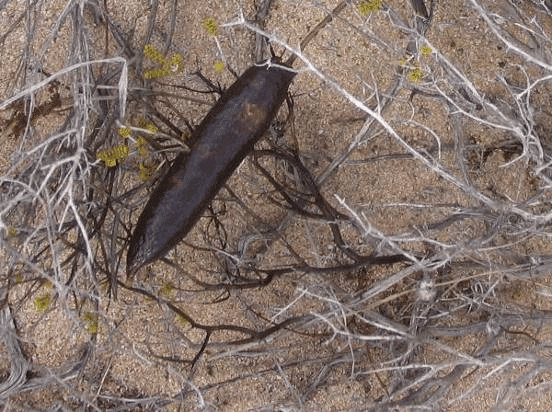Baiting
Eradicat® is a small, palatable feral cat 1080 sausage bait developed and produced by the WA Department of Biodiversity, Conservation and Attractions. Each bait contains 4.5mg of 1080 (sodium fluroacetate), a toxin that occurs naturally in Australian Gastrolobium pea plants. Unlike introduced predators, native Australian animals have developed a tolerance to the toxin due to having co-evolved with toxic plants over millions of years. Pet dogs and cats are highly susceptible to 1080 poisoning. Pet owners need to be aware and avoid taking domestic animals into areas managed for foxes or feral cats. Eradicat® is the only ready-to-lay bait registered for feral cats in WA.

Eradicat® is used to manage feral cats at a landscape scale for National Parks, Nature Reserves and other areas where native species of conservation significance require protection from feral cat predation.
Baiting should be undertaken at a time of year when fewest prey are available for feral cats to increase the likelihood of cats taking baits, and baits are least likely to be rained on.
Eradicat® can also be used for ground or aerial baiting campaigns, the conditions for use and distance restrictions are prescribed in the Code of Practice. The minimum area of application for an aerial baiting program is 20 hectares.
- Use of Eradicat® must be in accordance with the label directions on the packaging including a maximum of 50 baits per square kilometre, and no baiting in areas where northern quoll (DASYURUS hallcatus) may be present. If a variation to the described label is required, an APVM research purposes permit will be required.
- Eradicat® must be delivered in accordance with the WA Code of Practice.
- Anyone receiving or handling Eradicat® on a specified area of land, must complete the DPIRD online 1080 training to become an “Approved User”. Restrictions apply to who can lay 1080 and where.
- Use of Eradicat® must be approved by the DBCA Feral Cat Technical Committee via this application criteria. DBCA will provide approved applicants the 1080 Baiting Application Form and DBCA Risk Assessment Form. Contact [email protected].
Eradicat® aerial baiting is most suitable for large, landscape scale projects, for example baiting over an entire island or conservation reserve. Aerial deployment of Eradicat® was used for the initial knockdown of feral cats on Dirk Hartog Island, which is the largest island in the world on which feral cats have been eradicated. 80% of GPS collared cats died following the bait drop. Eradicat® is used to manage cats and protect chuditch and black-flanked rock wallabies in Kalbarri National Park, and to protect bilbies at Matuwa Kurrarra-Kurrara Indigenous Protected Area.
Non-target species may take baits, so they should be used in areas where feral cat encounter of baits is high, and where non-target species have a high tolerance to 1080.
Download the process for Eradicat access and approval in Western Australia here. Contact the Ecosystem Health Branch at DBCA [email protected] for further information.
Read more on the baiting of feral cats from Pest Smart and the in the Glovebox Guide for Managing Feral Cats.
Further Reading
Read more about feral cat baiting in our Bibliography
Image credits on this page: David Hawke/DBCA



